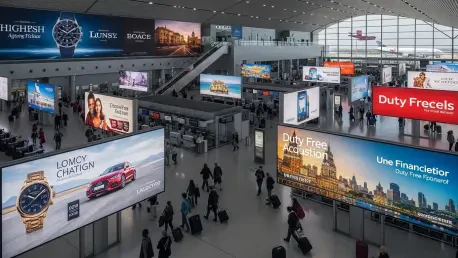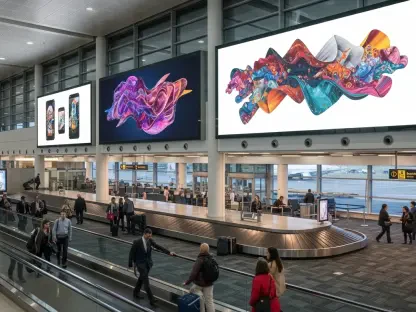The airport advertising industry has witnessed significant transformation over recent years, with the integration of advanced technologies and evolving consumer expectations. Airports, as bustling hubs of activity, provide unique opportunities for engaging diverse audiences in dynamic and innovative ways. Within this changing landscape, JCDecaux SE emerges as a leader, utilizing its strategic prowess to elevate airport advertising to new heights. Securing an exclusive advertising concession at Brussels Airport, a central European transport hub, underscores JCDecaux’s commitment to blending innovation with sustainability, offering unrivaled advertising solutions that enhance the passenger experience and visibility for advertisers.
Overview of the Airport Advertising Industry
The airport advertising sector presents a diverse landscape where technological advancements and regulatory frameworks guide strategic decisions. Comprising several segments, from digital displays and static billboards to interactive installations, the industry benefits from cutting-edge technologies that enhance engagement. Key players strive to remain competitive in an increasingly digital environment, necessitating adherence to regulations that address both safety and environmental impacts. Strategic initiatives within this sector are shaped by passenger demands for seamless and meaningful brand interactions during their travel experience.
Key Trends Shaping Airport Advertising
Technological Innovations and Market Dynamics
Technological advancements, combined with shifting consumer behavior, continue to redefine the airport advertising arena. Enhanced digital displays, programmatic ad offerings, and immersive experiences provide advertisers with unprecedented opportunities to capture passenger attention. Market dynamics highlight a growing preference for tailored, engaging content that resonates with travelers, leading to innovation-driven strategies that reflect these trends. JCDecaux’s investment in digital infrastructure and creative installations at Brussels Airport exemplifies this alignment with market drivers, setting new standards in airport advertising.
Market Data and Future Projections
Market data reveals promising growth trajectories for airport advertising, driven by increased passenger numbers and the integration of digital solutions. Forecasts indicate steady market expansion, with digital innovations at the forefront of future opportunities. Emerging trends, such as the integration of artificial intelligence and augmented reality in advertising campaigns, are projected to further transform the sector. By positioning itself as a pioneer in these innovations, JCDecaux not only capitalizes on this growth but also sets a benchmark for other industry players navigating this evolving landscape.
Challenges in Airport Advertising
Despite its promising prospects, the airport advertising industry faces several challenges. Technological constraints demand constant updates and investments, while regulatory requirements necessitate compliance with safety and sustainability standards. Market-driven obstacles, such as heightened competition and fluctuating passenger traffic, further complicate strategic planning. To navigate these challenges, a focus on innovative solutions, adaptive strategies, and robust partnerships can serve as effective measures, ensuring continued success in this dynamic environment.
Regulatory Environment in Airport Advertising
Compliance with stringent regulations is paramount in airport advertising, where safety and security take precedence. Laws governing digital content, environmental standards, and passenger data protection shape advertising strategies and operational practices. Adherence to these regulations underscores the importance of employing sustainable practices and integrating eco-friendly materials, aligning with global trends toward environmental accountability. JCDecaux exemplifies this approach, seamlessly weaving sustainability into its advertising programs at Brussels Airport, reflecting a deep commitment to regulatory compliance.
The Future of Airport Advertising
Looking ahead, the future of airport advertising is poised to be defined by emerging technologies and shifting consumer expectations. Trends such as sustainability-focused initiatives, the rise of hybrid digital and physical experiences, and the increasing demand for personalized content will drive industry changes. JCDecaux’s innovative strategies and global reach enable it to capitalize on these developments, positioning the company as a key player poised to influence the trajectory of airport advertising. The role of data analytics and AI will further enhance JCDecaux’s capabilities in curating impactful, client-specific advertising ecosystems.
Conclusion and Strategic Recommendations
JCDecaux’s formidable position in airport advertising, reinforced by its strategic initiatives at Brussels Airport, highlights a commitment to technological innovation and sustainability. The industry’s current state, marked by rapid digital integration and evolving consumer interactions, necessitates forward-thinking approaches. Strategic recommendations include a continued focus on digital innovation, sustainable practices, and adaptive strategies to address emerging challenges and opportunities. JCDecaux’s legacy in outdoor advertising and its increasing emphasis on comprehensive, cutting-edge solutions positions the company as a driving force in shaping both current practices and the future of airport advertising.









